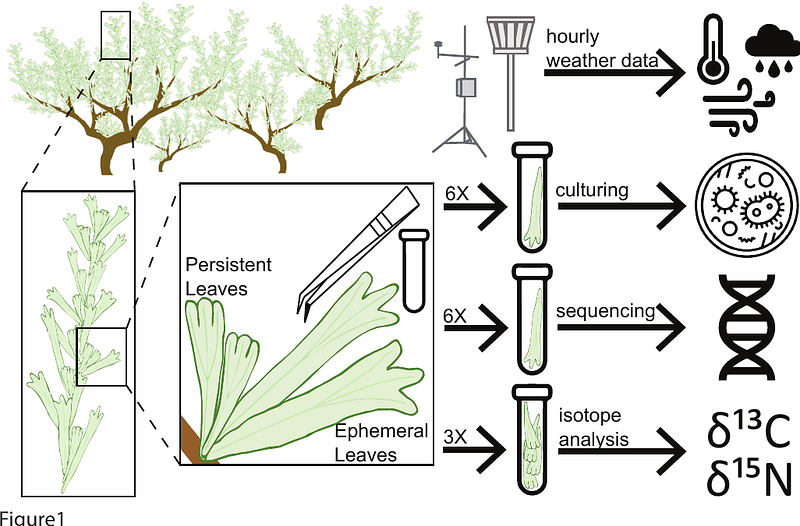Weather and leaf age separately contribute to temporal shifts in phyllosphere community structure and composition

Weather and leaf age separately contribute to temporal shifts in phyllosphere community structure and composition
Heil, J. A.; Simler-Williamson, A.; Striluk, M. L.; Trawick, D.; Capezza, R.; Osorio, A.; Finney, B.; DeFehr, C.; Turner, K. G.; Bittleston, L. S.
AbstractMicrobial communities living on plant leaves can positively or negatively influence plant health and, by extension, can impact whole ecosystems. Most research into the leaf microbiome consists of snapshots, and little is known about how microbial communities change over time. Weather and host physiological characteristics change over time and are often collinear with other time-varying factors, such as substrate availability, making it difficult to separate the factors driving microbial community change. We leveraged repeated measures over the course of an entire year to isolate the relative importance of environmental, host physiological, and substrate age-related factors on the assembly, structure, and composition of leaf-associated fungal communities. We applied both culturing and sequencing approaches to investigate these communities, focusing on a foundational, widely-distributed plant of conservation concern: basin big sagebrush (Artemisia tridentata subsp. tridentata). We found that changes in alpha diversity were independently affected by the age of a community and the air temperature. Surprisingly, total fungal abundance and species richness were not positively correlated and responded differently, sometimes oppositely, to weather. With regard to beta diversity, communities were more similar to each other across similar leaf ages, air temperatures, leaf types, and {delta}13C stable isotope ratios. Nine different genera were differentially abundant with air temperature, {delta}13C, leaf type, and leaf age, and a set of 20 genera were continuously present across the year. Our findings highlight the necessity for longer-term, repeated sampling to parse drivers of temporal change in leaf microbial communities.


